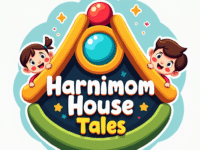
Why Screen-Free Time Matters (Even in Small Doses)
Let’s be honest: screens can be a lifesaver — especially when you’re cooking dinner, calming a meltdown, or just trying to drink your coffee while it’s still warm. But in a toddler’s world, balance is everything.

Research (and real-life experience) shows that too much screen time can affect a toddler’s:
- Sleep patterns
- Attention span
- Mood and emotional regulation
- Imagination and self-driven play
But here’s the good news: it doesn’t take a full tech detox to make a difference.
Even short bursts of meaningful, screen-free play can:
✔️ Strengthen your toddler’s brain
✔️ Build real-life skills
✔️ Create stronger connections between you and your child
What Makes a Great Toddler Activity?
The best screen-free activities don’t require Pinterest-level planning or expensive supplies. What toddlers really need is open-ended, sensory-rich play that allows them to explore their world with curiosity.
Look for activities that are:
- Open-ended – No right or wrong way to play
- Sensory-rich – Engages touch, movement, smell, and sight
- Short and flexible – Toddlers change gears fast
- Rooted in real life – Pouring water is more meaningful than filling out a worksheet
Why This Matters:
Young children learn best by doing. Every scoop, stir, stack, or pretend phone call is building their motor skills, focus, language, and problem-solving abilities. These experiences also teach toddlers how to manage frustration, make choices, and explore cause and effect.
And just as important? They remind us how powerful simple play can be.
Easy Screen-Free Activities Toddlers Actually Love
You don’t need fancy materials — just a bit of setup and a lot of curiosity. Here are 5 no-fail favorites:
1. Pom Pom Drop DIY
What You Need: Empty paper towel roll, painter’s tape, pom poms or cotton balls
Setup Tip: Tape the roll vertically on a wall or cabinet door.
How to Play: Let your toddler drop pom poms into the tube and watch them fall out the bottom. Add more rolls to make it a maze!
Great for:
– Fine motor control
– Hand-eye coordination
– Cause and effect
Variation: Use ping pong balls and a spoon for scooping.
2. Sticker Sorting
What You Need: Colored dot stickers, paper with matching colored circles or drawn shapes
Setup Tip: Draw colored circles or outlines on a sheet of paper.
How to Play: Have your child match stickers to the correct colors. For older toddlers, add numbers or shapes to sort.
Great for:
– Color recognition
– Focus and visual matching
– Pincer grip development
Variation: Use sticky notes or washi tape instead of stickers.
3. Water Play Station
What You Need: Plastic bowls, ladles, spoons, cups, water
Setup Tip: Lay down a towel or set up near a sink.
How to Play: Let your toddler scoop, pour, and stir water between containers. Add safe food coloring or floating toys for extra fun.
Great for:
– Sensory exploration
– Self-regulation
– Early science concepts (pouring, measuring)
Variation: Add ice cubes or sponges for new textures.
4. Animal Walks Game
What You Say: “Walk like a crab! Hop like a bunny! Stomp like a dinosaur!”
Setup Tip: Clear a soft space for safe movement.
How to Play: You call the animal, your toddler copies the movement.
Great for:
– Gross motor development
– Listening and following directions
– Releasing wiggles indoors
Variation: Make cards with animal pictures and draw one at a time.
5. Storytime Picnic
What You Need: Blanket, favorite books, soft toys, a small snack
Setup Tip: Use a corner of the living room or a shady spot outdoors.
How to Play: Spread out your picnic, let your toddler pick a book, and read together.
Great for:
– Language development
– Bonding and attention
– Creating calm, screen-free routines
Variation: Let your child read to their stuffed animals.

Shop Now!
Themed Play That Works Again and Again
Cooking Together
Let your toddler help stir, pour, or smell ingredients as you cook. Give them a plastic bowl, spoon, and a safe task.
Why it works: Toddlers love doing what you do. Cooking builds language, sensory skills, and even math (counting, measuring).
Nature Treasures Walk
Go outside and collect leaves, rocks, flowers, or sticks. Bring them home and sort by color, size, or shape.
Why it works: Promotes observation, appreciation for nature, and focused exploration.

Click Here!
Sensory Bins
Fill a tray with rice, oats, pasta, or dry beans. Add scoops, toy animals, or little cups for pouring.
Why it works: Sensory bins are calming, reusable, and great for attention spans.
Pretend Play Fun
Give your child old hats, toy phones, spoons, or cloths and let them “cook,” “clean,” or “call grandma.”
Why it works: Pretend play encourages creativity, empathy, and storytelling skills.
Printable Routine Charts for Toddlers
FAQs: Screens and Toddlers
How much screen time is okay?
According to the American Academy of Pediatrics:
- Under 18 months: Avoid screens (except video chats)
- 18–24 months: Limited, high-quality viewing with a caregiver
- 2–5 years: Up to 1 hour per day, co-viewed with an adult
What are signs my toddler needs less screen time?
- Trouble sleeping
- Irritability after screen use
- Difficulty focusing on toys or people
- Tantrums when screens are turned off
Is it bad to use screens sometimes?
No! Screens can help when used intentionally. What matters most is balance and ensuring kids still get time to move, explore, and connect.
Free Download: 7-Day Screen-Free Play Plan
Need a break from screen-time battles?
Download your FREE printable plan from Harnimom.com
Includes:
- 7 zero-prep toddler activities
- A quick supply checklist (mostly items you already own!)
- Bonus: Printable activity cards to use throughout the week
Perfect for building structure into your day without adding stress.
You’re Doing Amazing (Even on the Hard Days)
You don’t need to eliminate screens completely. You just need to make room for real-life magic — those small, silly, messy, beautiful moments that happen during simple play.
So when your toddler hands you a rock like it’s treasure, or giggles while pouring water into a cup…
They’re not just playing.
They’re building their brain. They’re connecting with you. They’re learning how the world works.
And you? You’re giving them something no screen ever can — your presence.
Want more? Explore our toddler storybooks, emotion tools, and printable charts at Harnimom.com — created with love to support your parenting journey.













